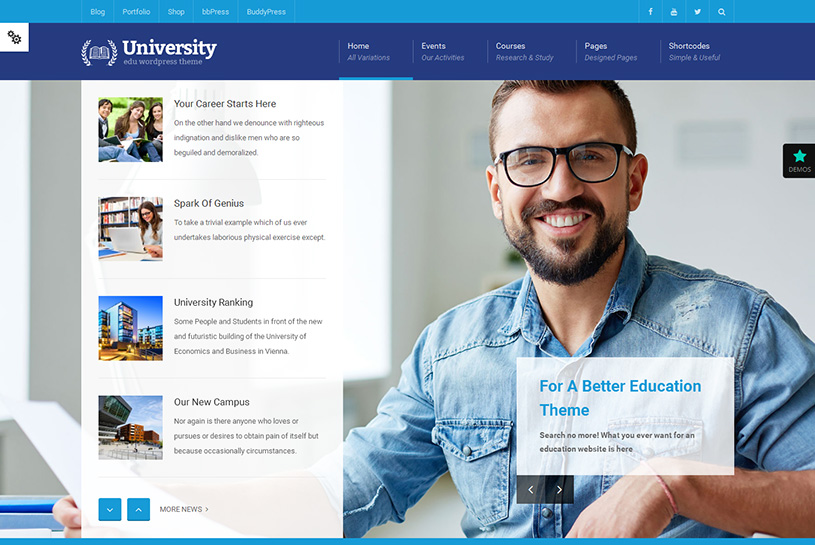Education With Free Downloadhome
Microsoft released Windows 7 in 6 different versions whereas Windows 10 has been released in 12 different editions. The most popular editions are Windows 10 Home, Education, Enterprise, Professional and LTSC Enterprise. Microsoft has released these editions, particularly for some fields. Windows 10 Home is the most-wanted among them because it’s for commoners.

Download free curriculum material, software, teaching support and eLearning to teach STEM, coding and robotics in your school with LEGO Education. Moving to a virtual classroom. Creating an online classroom is an important step in moving to a remote learning environment. Microsoft Teams for Education provides an online classroom so students and teachers can find new ways to continue to focus on learning — free for schools and universities. K9 Web Protection and Logging Made Especially for Classroom Computers K9 Web Protection is an Internet filter and parental control software for your home Windows or Mac computer, iPhone, iPad or Android device. It is free for home use, and costs $1.25 per month and computer for educational organizations (June 2012).

Related:
Download Windows 10 Home ISO
Windows 10 Home ISO 32-bit
Windows 10 Home ISO 64-bit
Download & Install Windows 10 Home
Check download requirements before you start downloading process. Follow these requirements strictly to avoid errors in downloading.
System Requirements
- 1GHz or above processor
- 1GB RAM for 32-bit and 2GB RAM for 64-bit
- Minimum 16GB hard disk space for 32-bit and 20GB for a 64-bit version
- 800×600 or above display
- DirectX 9 or above with WDDM 1.0 driver
Method 1: Windows 10 Create Bootable USB

The most commonly used method is to create a Windows 10 Home bootable USB by using Microsoft’s “Installation Media Tool.”

- Connect a 4GB USB flash drive with PC.
- Download Windows 10 Home from the links given above. (Make sure; you are downloading an appropriate version of Windows 10 Home.)
- Now, click Here to download “Windows 10 Installation Media.” It will download the tool from Microsoft’s official site.
- Once you have finished downloading, double-click the downloaded tool to launch it.
- Accept the terms and conditions by selecting “Accept” on this page.
- Now, select “Create Installation Media (USB flash drive, DVD, or ISO file) for another PC.”
- Click “Next” from the next window.
- Select a language, Windows 10 Home, Architecture and click “Next” to proceed.
- Now, select the USB flash drive/DVD option from here. (If you can’t see any option, refresh the page to view it).
- Select the “Removable USB flash drive or DVD” and click “Next.”
- That’s all. Your bootable USB flash drive is ready to work.
- Connect this bootable USB flash drive with the PC and reboot the system to start the installation.
Method 2: Create Bootable Windows 10 Disk Via Rufus
If the above method is not easy for you, use a third-party tool for this purpose. It’s easy and simple to use. You don’t need to follow a lengthy process. Just download the tool and follow a few click to create a bootable USB. The tool is known as Rufus.
- Click Here to download this tool.
- Now, double-click the downloaded “Rufus.exe” file and select “Install.”
- Once, it is over, double-click the tool icon to launch it.
- Connect a 4GB USB flash drive to your PC and download Windows 10 Home ISO from the above section.
- In Rufus, click the option “Create a Bootable USB Drive.”
- Now, select “Browse” to look for Windows 10 Home ISO file and click “Next” once you have selected ISO.
- Click “Start” and select “Windows 10 Home ISO” to start the process.
- Rufus starts converting the ISO image into a bootable “.exe” file.
- Within a few minutes, your bootable USB flash drive is ready.
- Now, plug in USB with PC where you want to install Windows 10 Home.
- Reboot the system to start the installation.
Method 3: Create USB via Command Prompt (Detailed Method)
It’s a manual way to create a bootable USB via CMD. Usually, it’s followed by the expert users. It’s not complicated, but a bit lengthy.
Follow the steps below to create USB via CMD.
- Download the ISO of Win 10 Home from the “Download” links given above. Save them to a destination that is easy to access.
- Connect a USB flash drive with PC. The USB flash drive should have at least 4GB storage capacity.
- Go to the Start menu, right-click on Command Prompt and select “Run as Administrator.”
- In CMD administrator, type “diskpart” to launch the Disk Management Utility tool. (Press “Enter” key after typing every command.)
- Now, type another command “list disk” to view the list of available disks.
- Type the command “select disc #” to select one disk for installation. I have written “#”, but you need to replace it with a disc name.
- Now, type “clean” to clean your USB drive and press “Enter.”
- Create a bootable partition by typing the command “Create partition primary.”
- Now, type “select partition 1” to select a partition, and type “Active” to active that partition. (Don’t forget pressing “Enter” key after every command.)
- Here, type “format fs=NTFS quick” to make your USB drive bootable.
- Type the command “assign” to assign a letter like X, Y or Z to the USB drive.
- Now type “exit” to quit the tool.
- Give the next command “PowerShell Mount-DiskImage –ImagePath “C:pathtoWindows10.iso” here. Add here the right path to Windows 10 Home ISO.
- Type “diskpart” and press Enter to open diskpart.
- Here, type “list volume” to know the drive name for Windows 10 Home ISO file.
- Now, type “exit” to close the tool.
- Type the drive where you have stored ISO file like type “E:” here.
- Now, type another command “cd boot.”
- Type “bootsect /nt60 X:” here.
- Now give another command to copy the ISO file “xcopy G:*.* X: /E /F /H.” The term “XCOPY” shows the copy of ISO file.
- That’s all. Now, your Windows 10 bootable USB drive is ready to use.
- Close Command Prompt Administrator.
Windows 10 Home Installation
- Restart the system and select “Boot from USB” when you see boot options.
- The system will start loading files.
- Once, it is over, you will see a window with some options. Select language, time zone and some other settings.
- On the next page, select “I Agree to the License Terms” from here.
- Now, you will see two options: Custom and Upgrade. Select “Custom” if you don’t need current apps, documents and programs. It will install the fresh copy of Windows. If you want to keep your data as it is, click the option “Upgrade” here.
- Now select a drive to install Windows 10 Home. It should have a minimum 20GB storage space.
- The system starts loading essential files. Wait for a few minutes until it is over.
- Once, it’s over, type a name for your computer. Add a network if you prefer. Otherwise, click “Later.”
- That’s all. Enjoy using Windows 10 Home on your PC.
- Note: While installing Windows, your PC restarts several times. Don’t interrupt the process and wait until it reaches 100%.
Windows 10 Home Features
Windows 10 Home is a great combo of Windows 8 and Windows 7. Several features are improved and many new apps and settings are a part of Windows 10 Home. Let’s have a glance over its striking features.
Faster startup saves your time. The Windows 10 Startup is incredibly faster now. It can boot, reboot, hibernate and sleep within a few seconds.
Cortana has improved performance now. The categorized search is faster and more accurate now. You can search your desired documents, media files and apps from web and from the system quickly.
More powerful Microsoft Edge is a part of Windows 10. Your browsing is even more protected now. Your data and system are protected from unauthorized access. The protection shield protects your data from malicious software while you are browsing.
Education With Free Download Homeschool
The desktop, apps, icons and taskbar is customizable in Windows 10 Home. You can use catchier settings to make your desktop, apps’ icons and taskbar more attractive.
Windows Defender and Firewall are more protective and powerful. Your system is safe from the access of malicious software while downloading something. It protects your system from hidden adware, malware, trojans and virus.
It brings securer device encryption. Windows 10 Home allows you to encrypt the data with absolute security. So, only authorized persons can access your system.
Parental Control brings browsing and screen time management in your control. Your system is safe for children and teenagers in the presence of parental control. They cannot access the adult content and social networking apps if you have enabled “Parental Control.”
In short, Windows 10 has lots of attractions to win the hearts of users. Use it and explore more features.
FAQs
Q: No scanner or other peripheral device is connected with PC. But still, the system shows a warning message “Remove External Hardware.” I can’t install Windows 10 Home.
There may be different external hardware such as scanner, printer, USB flash drive, headphone, hands-free and speakers. Make sure, you have removed all of the external hardware before you install Windows 10 Home.
Q: While installing Windows 10 Home, I got an error “0xC1900101.” I can’t uninstall Windows 10 Home. Please help.
An outdated driver causes this error. Make sure that you have updated the drivers. Moreover, check that you have the required disk space. Furthermore, run Windows Update for at least 3 times before starting the installation.

Q: When I begin the installation process, it shows a black screen and displays a message “Windows 10 cannot be installed.” I tried many times but in vain.
It’s due to a non-Microsoft antivirus program. If you are using a third-party antivirus program, uninstall it before starting the installation.
Q: The installation of Windows 10 Home halts midway. Please help.
Free Download Mp3
There may be an outdated driver in your system. You need to run “Windows Update” to update all the drivers then try again to install Windows 10 Home.